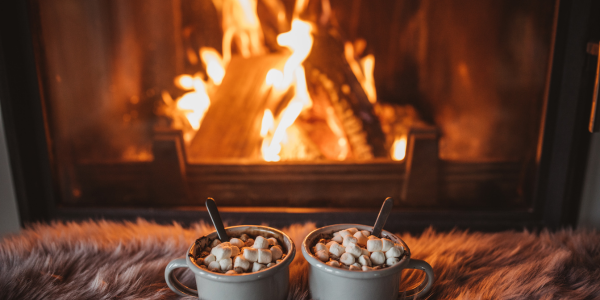As winter approaches, homeowners face a unique set of challenges. The cold season can be harsh on our homes, but with proper preparation, we can ensure they remain safe, warm, and energy-efficient.
Winter home preparation is more than just a seasonal task. It’s an investment in your property’s longevity and your family’s comfort. From inspecting heating systems to sealing windows and doors, every step counts.
This article provides a comprehensive guide to winterizing your home. It’s designed to help you navigate the process with ease, offering practical tips and a handy checklist. Whether you’re a seasoned homeowner or a first-time property manager, you’ll find valuable insights here.
So, let’s embrace the winter season together. With a well-prepared home, we can enjoy the beauty of winter without worrying about the cold. Let’s get started on your winter home preparation journey.
The Importance of Winter Home Preparation
Winter home preparation is crucial for several reasons. Firstly, it safeguards your home against potential damage from harsh weather conditions. This includes everything from frozen pipes to ice dams on your roof.
Secondly, a well-prepared home is more energy-efficient. By sealing drafts and insulating key areas, you can significantly reduce your heating costs. This not only saves you money but also contributes to a more sustainable and eco-friendly lifestyle.
Your Winter Home Preparation Checklist
Preparing your home for winter doesn’t have to be a daunting task. By following a simple checklist, you can ensure that every aspect of your home is ready for the cold season.
Here are some key areas to focus on:
- Heating systems
- Windows and doors
- Insulation
- Plumbing
- Roof and gutters
- Emergency preparedness
Inspect and Clean Heating Systems
Your heating system is the heart of your home during winter. It’s essential to ensure it’s in good working order before the cold sets in.
Have your furnace or boiler inspected and cleaned by a professional. This will ensure it operates efficiently and safely throughout the season.
Seal Windows and Doors Against the Cold
Windows and doors are common sources of drafts in the home. These drafts can significantly increase your heating costs.
Check for gaps and cracks in your windows and doors. Use caulk or weatherstripping to seal any leaks and keep the cold air out.
Add Insulation to Key Areas
Proper insulation is key to maintaining a comfortable temperature in your home. It also helps to reduce energy costs.
Pay special attention to your attic, basement, and crawl spaces. These areas often lack sufficient insulation and can be a major source of heat loss.
Prevent Plumbing Freezes
Frozen pipes are a common and costly problem in winter. They can burst and cause significant water damage to your home.
To prevent this, insulate your pipes, especially those in unheated areas. Also, remember to detach garden hoses and shut off outdoor water valves.
Maintain Your Roof and Gutters
Your roof and gutters play a crucial role in protecting your home from winter weather. Neglecting them can lead to serious issues like ice dams and water damage.
Ensure your gutters are clean and free of debris. Also, check your roof for any missing or damaged shingles and have them replaced.
Prepare for Emergencies
Winter storms can lead to power outages and other emergencies. Being prepared can make these situations less stressful and more manageable.
Create an emergency kit with essentials like flashlights, batteries, and non-perishable food. Also, ensure your smoke and carbon monoxide detectors are working properly.
Energy Efficiency During Winter
Winter can be a challenging time for energy efficiency. However, with the right strategies, you can keep your home warm without breaking the bank.
One of the most effective ways to save energy during winter is by controlling your home’s temperature.
Programmable Thermostats: Your Best Friend
A programmable thermostat can be a game-changer for your winter energy costs. It allows you to set your home’s temperature based on your daily schedule.
This means you can lower the temperature when you’re not home, and have it warm up just before you return. This simple adjustment can lead to significant savings on your heating bill.
Smart Home Devices for Winter Efficiency
Smart home devices offer another level of control over your home’s energy use. These devices allow you to monitor and adjust your home’s heating remotely.
For instance, smart thermostats can learn your schedule and preferences, adjusting the temperature automatically. This not only enhances comfort but also optimizes energy use during the winter months.
Protecting Your Home’s Exterior
The exterior of your home is the first line of defense against winter weather. Proper preparation can help prevent damage and ensure your home stays warm.
This includes tasks like tree trimming and winterizing outdoor water systems.
Tree Trimming and Property Safety
Trees can pose a risk to your home during winter. Heavy snow and ice can cause branches to break and fall, potentially damaging your property.
Regular tree trimming, especially of dead or weak branches, can help prevent this. It’s a crucial part of winter home preparation.
Winterizing Outdoor Water Systems
Outdoor water systems are vulnerable to freezing temperatures. If water in pipes freezes, it can cause the pipes to burst, leading to costly repairs.
To prevent this, it’s important to drain garden hoses and shut off outdoor water valves. This simple step can save you a lot of trouble when winter arrives.
Indoor Air Quality and Comfort
Maintaining indoor air quality and comfort is a key aspect of winter home preparation. As we spend more time indoors, the air quality can significantly impact our health and comfort.
Proper humidity levels and clean air can make a big difference in how comfortable your home feels during the winter months.
The Role of Humidifiers and Air Filters
Humidifiers can help maintain optimal humidity levels in your home. This can prevent dry skin and respiratory issues that are common in winter.
Similarly, clean air filters in your heating system can improve air quality. Regularly checking and replacing these filters is a simple but important step in preparing your home for winter.
Long-Term Winterizing Investments
Investing in long-term winterizing solutions can provide significant benefits. Not only can these investments improve comfort and safety, but they can also lead to substantial energy savings.
Over time, these savings can offset the initial cost of these improvements, making them a smart choice for homeowners.
Upgrading to Energy-Efficient Windows and Doors
One effective long-term investment is upgrading to energy-efficient windows and doors. These can significantly reduce heat loss, leading to lower heating costs.
In addition, they can improve the overall comfort of your home by eliminating drafts and cold spots.
The Benefits of a Home Energy Audit
A home energy audit can identify areas in your home that could benefit from energy efficiency improvements. This can help you prioritize your winter home preparation efforts.
By focusing on the areas that need it most, you can maximize your energy savings and improve your home’s comfort during the winter months.
Conclusion: The Rewards of a Well-Prepared Home
Winter home preparation is more than just a seasonal task. It’s an investment in your home’s comfort, safety, and energy efficiency.
By taking the time to prepare your home for winter, you can enjoy the season with peace of mind, knowing that your home is well-protected against the cold.
Printable Winter Home Preparation Checklist
To make your winter home preparation easier, we’ve compiled a handy checklist. Feel free to print it out and use it as a guide as you winterize your home.
- Inspect and clean heating systems
- Seal windows and doors against the cold
- Add insulation to key areas
- Prevent plumbing freezes
- Maintain your roof and gutters
- Prepare for emergencies
- Install a programmable thermostat
- Consider smart home devices for winter efficiency
- Trim trees and winterize outdoor water systems
- Maintain indoor air quality with humidifiers and air filters
- Consider upgrading to energy-efficient windows and doors
- Schedule a home energy audit
FAQs About Winterizing Your Home
When should I start winter home preparation? Start your winter home preparation in the fall. This gives you ample time to address any issues before the cold weather sets in.
Do I need a professional for winter home preparation? While you can do many tasks yourself, some tasks like inspecting heating systems or performing a home energy audit may require a professional.
What are the benefits of winter home preparation? Winter home preparation can increase your home’s energy efficiency, reduce utility bills, and prevent costly damage from winter weather.
Can I winterize my home on a budget? Yes, many winter home preparation tasks are low-cost or free. For example, sealing drafts and adding insulation can be done inexpensively and still make a big difference.
Additional Resources and Further Reading
For more detailed information on winter home preparation, consider visiting websites like Energy.gov, the DIY Network, or the Home Repair Tutor. These resources offer in-depth guides and practical tips.



